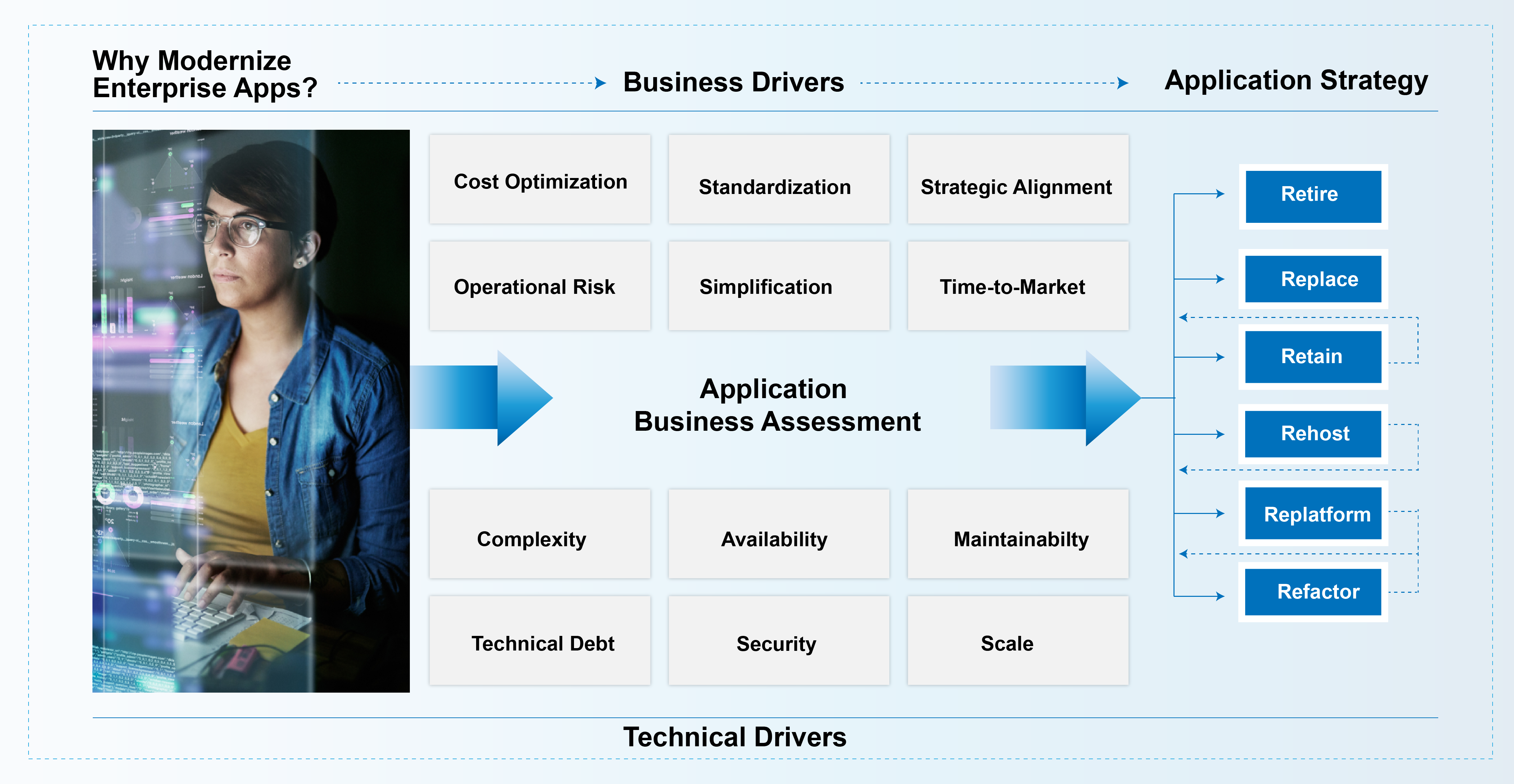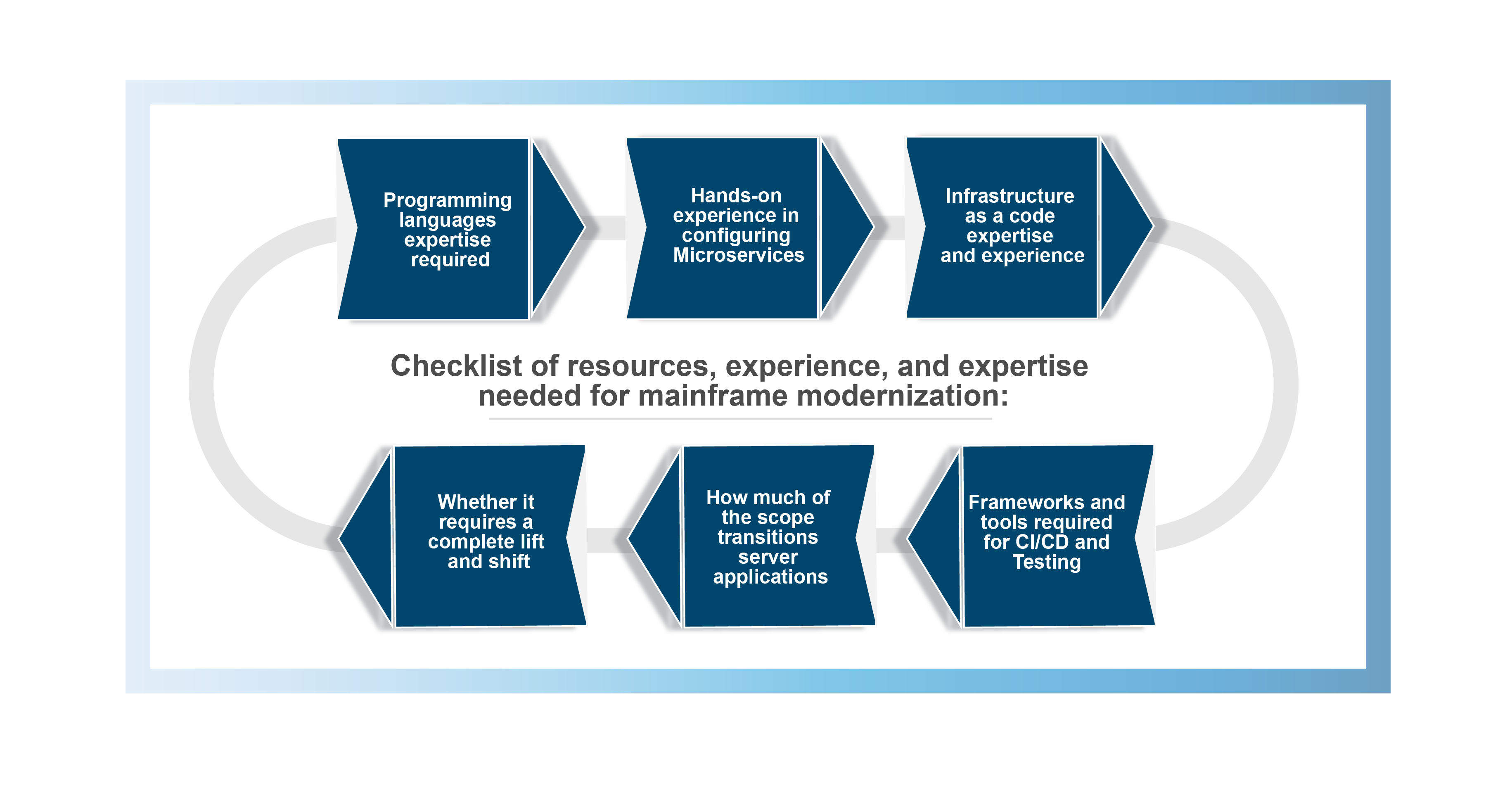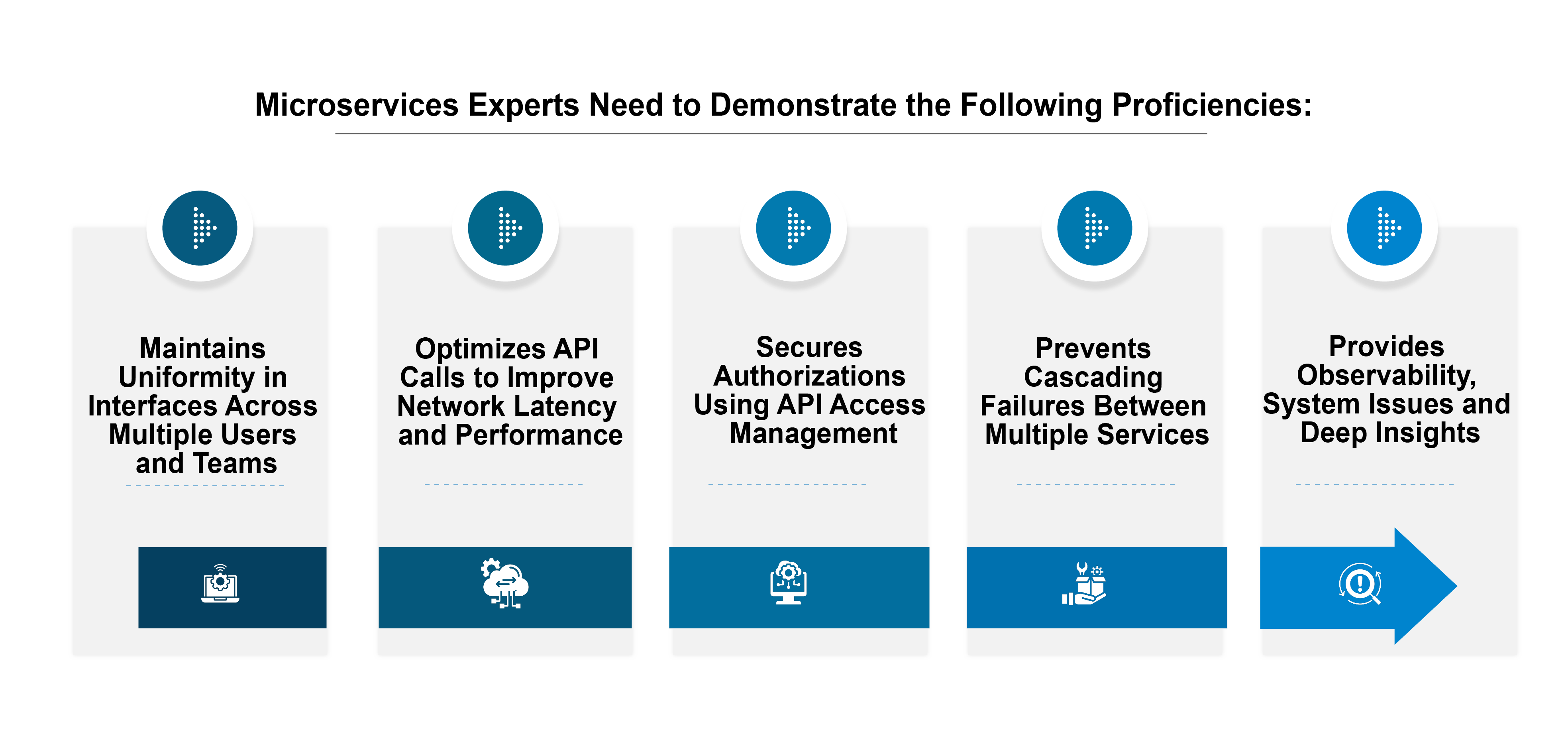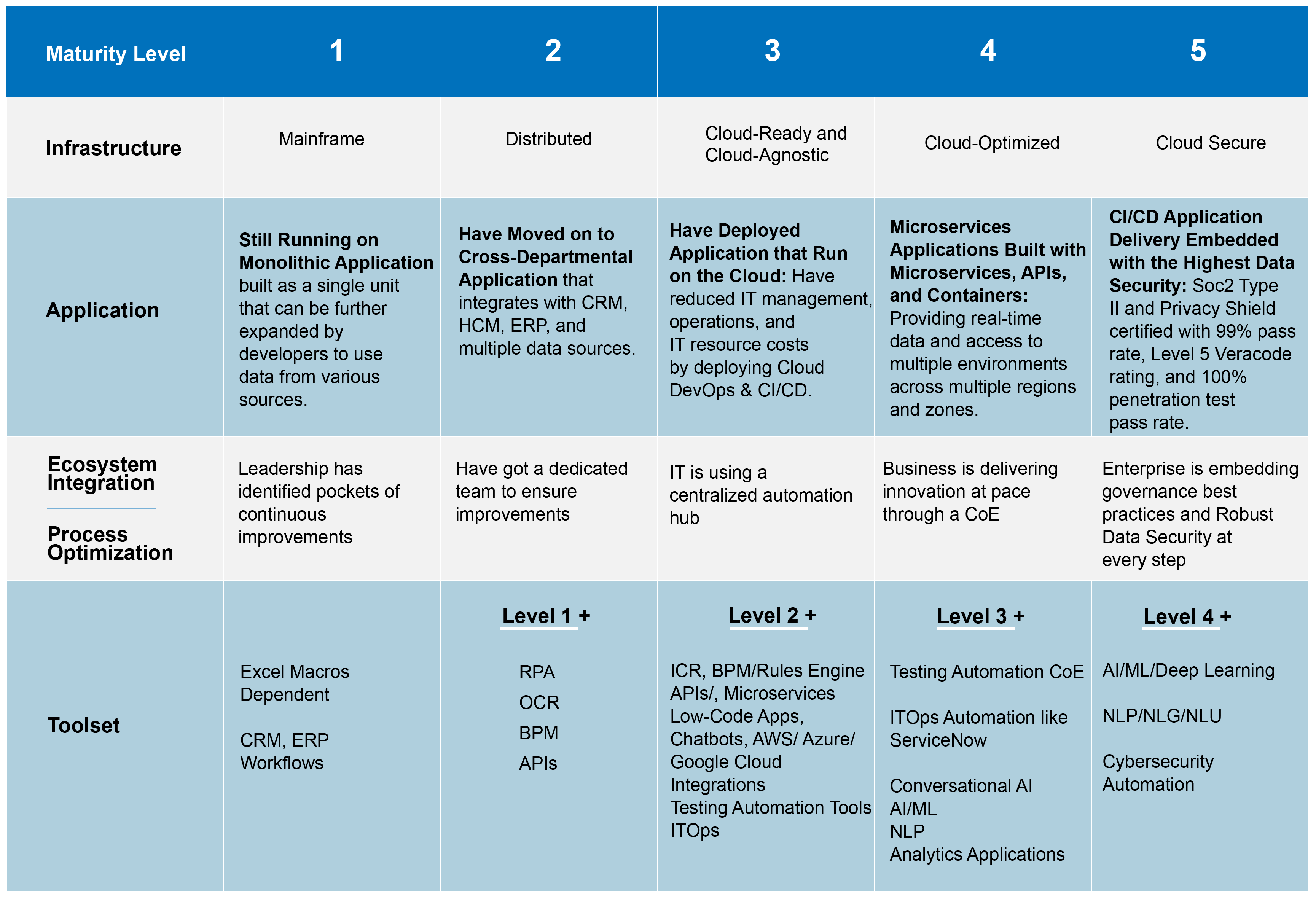All-In-One Scriptless Test Automation Solution!
All-In-One Scriptless Test Automation Solution!
What to Look for in Your Enterprise Application Development and Mainframe Migration Vendor
An Overview of Client Expectations When Performing a System Upgrade or Migrating PowerBuilder Apps to the Web
PowerBuilder to Java conversion creates access to many new technologies and enables easy integration of new products and service into the banking system. Bank CTOs need not go through the time, effort, and expense required to build something from scratch. Let us therefore investigate more about some of the other top reasons that are compelling CTOs to look at the benefits of migration from PowerBuilder.
Table of Contents
There are very legacy applications that despite being dated work fine and are used extensively by employees as well as customers. For such business-critical applications, CIOs and CTOs are in a state of dilemma to decide what components to pick and choose for modernization. In highly regulated industries such as banking, customer data that can be accessed through the old legacy system works just fine for daily business continuity. Hence, the pressing question here is whether it is wise to disrupt business-critical operations because innovation requires making some changes to the code structure.
Decision makers will therefore need to weigh-in the time as well as costs involved in the method of mainframe Modernization. Whether it is Re-hosting, Re-platforming, Re-factoring, and/or Re-architecting, the process would ultimately involve peeling off a legacy monolith and converting it into several Microservices or multiple enterprise applications. To begin with, any Mainframe Modernization, Microservices launch or Data Migration needs to be defined by a milestone driven timelines. Of the many things that go into defining the scope of such projects, expertise in code-refactoring is a must have skill. In such a scenario, your IT vendor must present a solution that offers the best of both worlds – Refactoring as well as Rapid App Development using No-Code/Low-Code.
There would be parts or components of the application that can be modernized with minor changes done to the code structure. For example, our experts when executing application modernization for a large US Federal bank presented a separate execution plan for different Microservices. There were applications that required cross-functional collaboration and were tied to the legacy COBOL systems. For example, all team members who were working on Guarantee Management Processes were relying on a COBOL-based legacy system to process Letter of Credits (LOCs). Without tampering the old system, our developers were able to refactor a part of the code and migrated the Guarantee Management Process from PowerBuilder to Java.
Similarly, a new Wire Transfer experience was enabled using a similar code-upgrade thereby helping the bank to change the way data is accessed and worked on by the bank’s auditors and the credit union’s customers. Streamlined workflows and redesigned screens have not only increased the efficiency of bank employees, the newly launched experience makes it easy for customers to raise requests and look up for information. The newly activated experience is nor essential to providing convenience of looking up information from a mobile device or to track the status of the requests raised through the new portal.
Below, we will discuss the various steps involved in preparing a robust strategy for enterprise application modernization.
As refactoring any application is a highly complex activity, the extent to which the app needs to be re-platformed or refactored must be analyzed first.
Get a detailed cost analysis or the total cost of ownership that can be saved by enable concurrent processing of Batch and transactions in the transitioned environment.
Get a detailed breakdown to show all the new technologies, platforms, tools, and add-ons that would be required for each of these small project scopes.
With a detailed discovery assessment process, get an analysis of the different Microservices that can be launched by peeling layers of the mainframe application.
Identify the workflows that are most suitable for a mobile app update and define achievable milestones in terms of performance, maintenance, ease of new integrations, etc.
For example, transition a retail banking mainframe application from a dual online/Batch model to real-time processing of data made possible event driven Microservices.

Identify all the Microservices that can be launched through new applications or migrating whole or parts of the existing mainframe server applications.
Make a list of workflows that require batch processing or bulk processing of data that can now be performed in real-time with an enhanced transactional engine.
Your IT Vendors must describe the approach to migrating mainframe batches to a cloud platform such as AWS as it can determine the success of an update or new release.
Prepare a detailed list of batches and their stringent performance requirements such as intensive I/Os, large datasets, and short durations is required.
Make a detailed checklist of resource needs based on the following:

Verify vendor experience in deploying containers that can act as execution units for locally deployed services connected to multiple event-driven databases.
Check for ability to generate No-Code REST APIs that accurately capture all rules, routines, commands, and protocols.
Proficiency in deploying REST API would demonstrate the ability to bring multiple Microservices under a single application.
Evaluate the level of experience in using reverse engineering tools used to convert all or part of a code into a platform such as Java.
Experience in Integration of REST APIs for Microservices Based Applications
Look for the following capabilities when choosing REST API integration tools and partners for Microservices Based Application deployments.
Maintains Uniformity in Interfaces Across Multiple Users and Teams
Interactions become consistent in the way multiple users or customers see or consume data or whenever an operation leads to an event-driven trigger or change.
Optimizes API Calls to Improve Network Latency and Performance
One can significantly reduce API latency by adopting database querying strategies like multicolumn indexing over various multiple columns working simultaneously.
Secures Authorizations Using API Access Management
When building Microservices, API gateways and API access controls bring flexibility in adjusting access control policies based on user context and goals.
Prevents Cascading Failures Between Multiple Services
By implementing a Circuit Breaker Pattern, multiple Microservices under a single application become free from cascading failures in distributed systems.
Provides Observability, System Issues and Deep Insights
Get a detailed scan of API logs, events, and metadata to build insights on data query contexts, trends, system behavior, peak loads, and more.

Understanding logic and role of interfaces holds the key to rapidly launching modern applications through reverse engineering and documenting legacy code.
Reverse engineering also implies generating SQL statements or batch jobs to extract many objects from a large catalogue of information.
Evaluate the IT Vendor’s knowledge of reverse engineering legacy Code + Data which involves extraction of legacy database schemas, using code reversers, etc.
Experience of data extraction for reverse-engineering implies the following:
Db2 objects include table spaces, tables, indexes, views, synonyms, aliases, referential constraints, table check constraints, and triggers.
Data migration experts therefore must have absolute mastery over extraction of data that helps identify – sequences, functions, global variables, stored procedures, tables, indexes, aliases, and views.
Understanding logic and role of interfaces holds the key to rapidly launching modern applications through reverse engineering and documenting legacy code.
On a Scale of 1-To-5: Identify Your Maturity Level Based on the Modernization Matrix Shown Below

Download this EBook about our 5-step framework for Rapid No-Code Application Development.
Qualify for a free consultation on the right application modernization strategy for your enterprise.